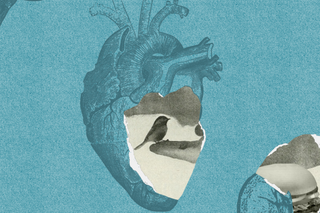
What If Memory Lived Outside the Brain Too?
Everything that happens to us is a memory that potentially lives within us – everywhere.

What if the body really does remember?
Consider a new study in Nature Communications, which found that nerve tissue cells and kidneys “remember” and learn things similarly to brain cells. Researchers from New York University used the massed-spaced learning effect, or spacing information over regular intervals (which is more effective than cramming it all at once) on two types of human non-brain cells: the nerve cell and the kidney cell. When chemical signals were administered in pulses – similar to how neurotransmitters work in the brain – the non-brain cells “switched on” the memory gene, which is the same gene that brain cells turn on when they identify patterns and create memories. How do we know that? The researchers engineered the cells to glow when they are activated.
To lead researcher Nikolay Kukushkin, this suggests that “in the future, we will need to treat our body more like the brain—for example, consider what our pancreas remembers about the pattern of our past meals to maintain healthy levels of blood glucose or consider what a cancer cell remembers about the pattern of chemotherapy.”
Previously, studies in other species have shown similar results. The tiny planarian flatworm, renowned for its regenerative capabilities, is often used as a proxy for studying memory in animals. More than a few experiments have found that when the planarian is cut up – sometimes into several pieces – each “new” constituent worm retains memories it learnt as the original whole. Like when researchers exposed it to pain stimuli, and the new worms also reacted to the same stimuli – despite regenerating an entirely new head when decapitated. In other words, the new worms, with regenerated heads, still “remember” pain stimuli that the original learnt to react to.
Memory Can be Enhanced, Manipulated, and Edited. Will the Future of Memory be Ethical?
The same goes for hibernation, a process which “devastates the central nervous system” of hibernating animals – their neurons shrink and their brain connections shrivel. And yet, they retain memories when they wake up. According to researcher Thomas R. Verny, these experiments prove the existence of cellular memory: “Our memories, our tastes, our life knowledge, might owe just as much to embodied cells and tissues…The mind, I conclude, is fluid and adaptable, embodied but not enskulled.”
The prevailing theory about memory, for a long time, has been that it lives in synapses – the space between neural cells where impulses travel from one to another. When the synapses degrade, memory fades. But a 2015 study on live sea slugs showed that even when long-term memory was erased by destroying the synapses, a “reminder stimulus” could allow the memory to re-form – suggesting that memory could also be stored inside a neuron, in the cell nucleus.
The logical next step, then, would be to study the cell. That’s where the Paramecium comes in – a single-celled eukaryotic ciliate. In the mid-20th century, researchers subjected it to Pavlovian experiments, where they trained it to associate a metal wire with bacteria (its food) and a four-second tone with an electric shock (it then began to recoil when it heard the tone). Decades later, in 2008, a single-celled giant amoeba learnt to anticipate puffs of cold air at regular intervals, showing that it also understood time.
Studies like these test the theory of “cell memory” outside the bounds of the adaptive immune system, in which immune cells “learn” to recognize pathogens upon repeated exposure. This line of research is, in a way, a cousin of sorts to the universe of epigenetics: the process by which the environment and life experience can change genetic expression in future generations. The evidence for epigenetic memory is still nascent: an experiment showed that a nematode “remembered” bacteria that its parent was exposed to, and a more recent study from neuroepigeneticist Isabel Mansuy proposed that fearful or traumatic memories can be passed down generations through epigenetics.
Oceans May Be Losing Their Memory
While the consensus on epigenetic memory is that it’s still inconclusive, theories on whether memories based on experiences and environment can live outside the brain all come to a head in the subject of organ transplants. One controversial paper, based on highly contested evidence, suggested that heart transplant patients retained a few memories from their donors – like a recipient who was afraid of water (their donor died by drowning), or another who became nauseated around food (their donor was bulimic). Outside of this study too, it has been shown that organ transplant patients do report personality and preference changes. Although this phenomenon has still not been understood, cell memory has been offered as a tentative explanation.
The way we’ve understood memory so far has been “synaptocentric” – too reliant on the idea that synapses in neural networks are the primary and sole purveyors of memory. But the growing evidence – and questions – around “cell cognition,” or the idea of cells storing memories, points to a sobering yet, depending on how you view it, charming reality. We’re not, unlike what Descartes believed, minds separate from our bodies. Everything that happens to us is a memory that potentially lives within us – everywhere.
Rohitha Naraharisetty is a Senior Associate Editor at The Swaddle. She writes about the intersection of gender, caste, social movements, and pop culture. She can be found on Instagram at @rohitha_97 or on Twitter at @romimacaronii.
Related


The Vulture and the Cow: A Parable
